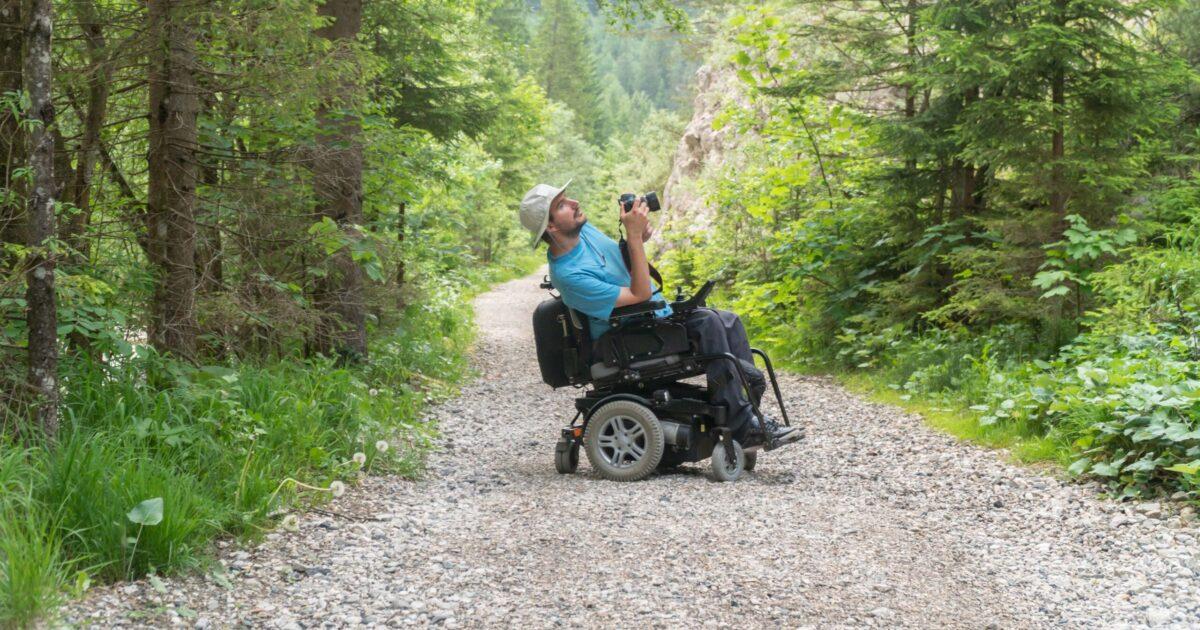I’d like to start a reasonable discussion about the use of wheelchairs and bicycles on hiking paths/ trails in compliance with the ADA. (Americans with Disabilities Act) A conversation about sharing trails with disabled users, responsible and respectful people. Not a discussion about illegal motorized traffic, reckless bicycle riding or trail sabotage by pedestrians, please.
Many people with disabilities, can overcome them to do some of their favorite activities or get to destinations with the help of a wheelchair, bicycle or other device. I recently saw a motorized wheelchair with tracks that was available for use in the forest. If that’s a possibility then why not non motorized bicycles/ wheelchairs when it’s possible? Especially for people who can’t physically carry a backpack without causing pain or injury.
I’m one of those people. I can’t carry a backpack for 100’ without pain but I can load that same stuff on a bicycle and ride it all day. In fact, the activity is very beneficial to me when I take weight off my back by using the handlebars. It allows me to maintain fitness just as hiking does for others. Cycling has been the number one best thing to strengthen myself around my disability and improve my health. The forest is as beneficial to me as anybody else.
Looking at Wharton Forest for example, all of the longest most scenic trails don’t allow bicycles. The Penn Branch Trail is a great one but it’s the only one unless you’re sharing sand roads with motor vehicles. The number of miles of hiking only trails vs bicycle trails is quite lopsided.
I believe a responsible, respectful trail user should be able to bikepack the Batona trail or ride the scenic trails along the lakes and rivers. I also believe the ADA should back me up on this.

Many people with disabilities, can overcome them to do some of their favorite activities or get to destinations with the help of a wheelchair, bicycle or other device. I recently saw a motorized wheelchair with tracks that was available for use in the forest. If that’s a possibility then why not non motorized bicycles/ wheelchairs when it’s possible? Especially for people who can’t physically carry a backpack without causing pain or injury.
I’m one of those people. I can’t carry a backpack for 100’ without pain but I can load that same stuff on a bicycle and ride it all day. In fact, the activity is very beneficial to me when I take weight off my back by using the handlebars. It allows me to maintain fitness just as hiking does for others. Cycling has been the number one best thing to strengthen myself around my disability and improve my health. The forest is as beneficial to me as anybody else.
Looking at Wharton Forest for example, all of the longest most scenic trails don’t allow bicycles. The Penn Branch Trail is a great one but it’s the only one unless you’re sharing sand roads with motor vehicles. The number of miles of hiking only trails vs bicycle trails is quite lopsided.
I believe a responsible, respectful trail user should be able to bikepack the Batona trail or ride the scenic trails along the lakes and rivers. I also believe the ADA should back me up on this.

